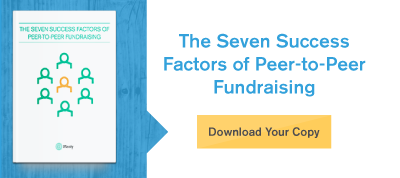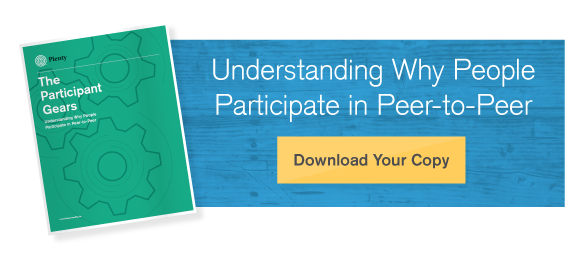Three Ways To Cultivate Your Peer-to-Peer Community
We’ve all, at one point or another in our academic careers, heard a professor or classmate invoke the tired existential conundrum, "If a tree falls in a forest and no one is around to hear it, does it make a sound?" The platitude’s mere mention usually precedes a collective groan, but its logic raises an important (if equally groan-inducing) question for fundraisers: “If a fundraising campaign is underway and no one is around to support it, does it still serve a purpose?” And while we may not be able to answer the first question -- we’ll leave that one to the philosophy professors -- we do know the answer to the second: a resounding “no.”
To avoid developing a stagnant campaign, it’s critical to attract the right group of constituents to form a strong community. Then, once you’ve formed that core base of support, you must nourish it. Here are three ways to focus on cultivating a vibrant constituent community.
Find “Your People”Building a network for your fundraising event or campaign goes far beyond simply rallying as many people around your cause as possible to get more constituents. Rather, it involves a much more thoughtful effort focused on assimilating like-minded and cause-interested people into your community.
Fortunately, this happens organically every day. From youth sports teams to college fraternities to new mom support groups, individuals with a shared set of interests come together to form collectives larger than themselves. Humans are hard-wired to seek out their people – their "tribe” – and stick with them. There’s safety and comfort in being part of a group with a shared ethos.
Build upon that natural inclination and target those supporters who share your community’s existing values and interests. Assimilating and, eventually, actively participating in a community is much easier when your constituents feel the security of a shared passion for your cause. It’s far more valuable to your program to have a core group of committed supporters than a larger, less passionate one.
Keep Constituents ConnectedOnce you identify and assimilate “your people” into the community, they’ll stick by you because they sincerely care about your mission. But your constituents’ loyalty doesn’t mean that you can sit back and relax as they fundraise for you – some care and feeding is involved.
Think about it this way: your Great Aunt Gertrude sends you a check every year on your birthday. Time passes, and as you grow from a cartoon-watching kid to a high school athlete, you see her less and less frequently. But you still want that $15 check to buy a Coldplay album. Do you:
A) Kick back, wait, and keep checking the mail.B) Send her a postcard from spring break and call her on Christmas.
The answer, of course, is B.
And while it may sound like a no-brainer, many peer-to-peer fundraising campaigns fail for this very reason. It’s critical to maintain your relationships with community members if you hope for continued or increased fundraising from them. If you drop off their radar, they’ll justifiably turn their attention and fundraising dollars to a more communicative organization, just as Great Aunt Gertie would start considering her other nieces and nephews if you went silent. Take every opportunity you can to connect with your tribe members: send thank you notes, host a live chat via social media, or ask for feedback in a post-event survey. And pay attention to what works: data-driven decisions are critical optimization tools when resources are limited.
Branding MattersWhat’s the point of forming a community if your constituents can’t tell who its other members are? Creating a cohesive, consistent brand and a means of tribal identification helps community members identify your programs and one another, while also fostering a sense of belonging and allowing your constituents to show off their passion for your organization. The key to developing the winning pieces of identification – be they pins, t-shirts, or clever hashtags, is to ensure that they reflect your overarching mission and brand. Your cause is what ties your program’s supporters, volunteers, and staff together, after all.
It’s not just about enhancing the brand of your organization, event, or campaign, but also about giving members opportunities to enhance their own personal brands. Because even the most sincere, tenderhearted philanthropists ask the question, "What's in it for me?" Peer-enable your communications, fundraising pages, and supporting materials – that way your constituents can take your message in all of its forms and run with it to their networks.
Ultimately, peer-to-peer fundraising isn’t about giving people a convenient place to toss their spare change and claim a handy tax write-off, but about providing opportunities to enrich their personal and professional lives by fundraising for your cause with like-minded people. Do so, and the resulting close-knit network of constituents will exponentially grow your network, raise critical funds for your mission, and shake up the forest floor.
Did you know that community is one of the biggest driving forces of participation? Learn how you can grow your nonprofit's community and increase participation in our new e-book "The Participant Gears". Download this free, easy-to-digest, and helpful tool today and expand your organization's reach!
Share this
You May Also Like
These Related Stories

Three Reasons People Participate In Your Peer-to-Peer Event

Seven Things Keeping You From Peer-to-Peer Fundraising Success




No Comments Yet
Let us know what you think